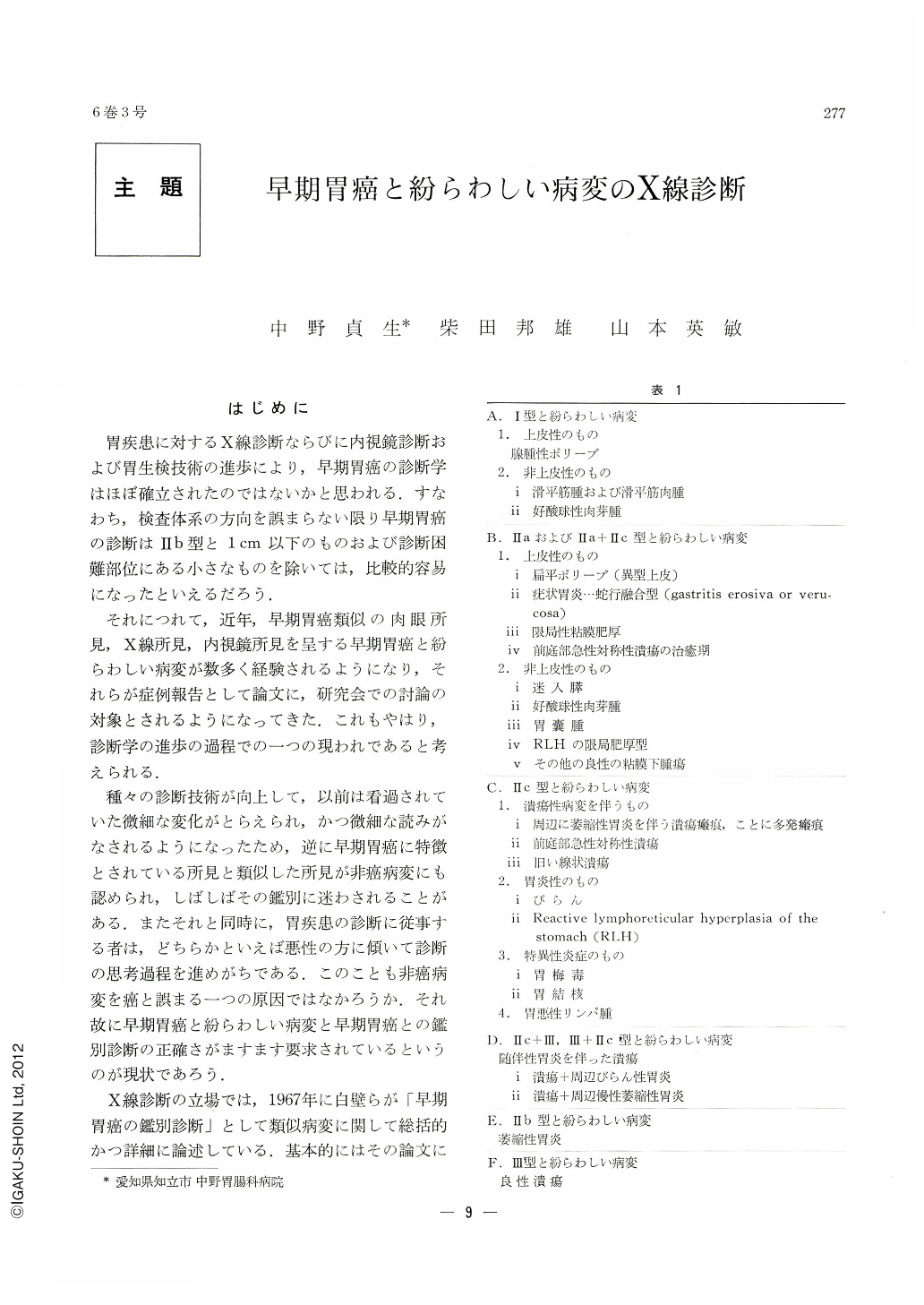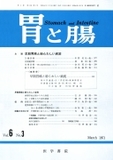Japanese
English
- 有料閲覧
- Abstract 文献概要
- 1ページ目 Look Inside
はじめに
胃疾患に対するX線診断ならびに内視鏡診断および胃生検技術の進歩により,早期胃癌の診断学はほぼ確立されたのではないかと思われる.すなわち,検査体系の方向を誤まらない限り早期胃癌の診断はⅡb型と1cm以下のものおよび診断困難部位にある小さなものを除いては,比較的容易になったといえるだろう.
それにつれて,近年,早期胃癌類似の肉眼所見,X線所見,内視鏡所見を呈する早期胃癌と紛らわしい病変が数多く経験されるようになり,それらが症例報告として論文に,研究会での討論の対象とされるようになってきた.これもやはり,診断学の進歩の過程での一つの現われであると考えられる.
種々の診断技術が向上して,以前は看過されていた微細な変化がとらえられ,かつ微細な読みがなされるようになったため,逆に早期胃癌に特徴とされている所見と類似した所見が非癌病変にも認められ,しばしばその鑑別に迷わされることがある.またそれと同時に,胃疾患の診断に従事する者は,どちらかといえば悪性の方に傾いて診断の思考過程を進めがちである.このことも非癌病変を癌と誤まる一つの原因ではなかろうか.それ故に早期胃癌と紛らわしい病変と早期胃癌との鑑別診断の正確さがますます要求されているというのが現状であろう.
X線診断の立場では,1967年に白壁らが「早期胃癌の鑑別診断」として類似病変に関して総括的かつ詳細に論述している.基本的にはその論文につけ加わえるものはないように思われる.ただ,それ以後の約4年間になされた症例報告,研究発表と筆者らが自験した経験例から得られた若干の知見が補足されるのみである.それで,この小論は,先達の文献および研究会,雑誌などで発表された症例を参考としながら,筆者らが開業医の立場において経験した自験例を中心として,早期胃癌と紛らわしい病変について述べてみることにする.
In accordance with recent progress in the diagnostic technics for early gastric cancer, more and more minute lesions are now accurately diagnosecl. Concomitantly, those benign lesions are now more freuently encountered which closely resemble early gastric cancer by their gross as well as x-ray and endoscopy findings. Sometimes their discrimination is fairly difficult.
In our own cases as well, we have been confronted with many cases hardly distinguishable from early gastric cancer not only in their x-ray and endoscopy pictures but also in their macroscopic findings.
The incidence of lesions simulating Ⅱc and Ⅱc+Ⅲ type early gastric cancer was highest in our series, followed by those resembling Ⅱa and Ⅱa+Ⅱc types. Of all types of early gastric cancer, the one showing highest incidence has its most frequent counterpart in lesions simulating it.
Roentgenologically, discrimination between depressed type early gastric cancer and its simulating lesions lies in the faithful visualization of zonal gastritis around ulcer or ulcer scar as well as in the accurate interpretation of findings thus obtained.
Protruding variety of early gastric cancer must be strictly evaluated on the basis of minute scrutiny of mucosal surface, taking two factors, the shape and size of tumor, into consideration. Afterall, compression and double contrast methods are most fruitful. Needless to say, as these x-ray diagnostic methods have their limitations, endoscopy and biopsy must be fully utilized as well. The latter in particular plays a decisive role in the discrimination between cancer and non-cancerous lesion. Nevertheless, the value of x-ray diagnosis for early gastric cancer is not lessened at all. It is very effective in picking up abnormal findings, or in determining both the accurate sphere of a lesion after it has been confirmed as cancer and the extent of the area of the stomach to be resected. No other examination method has such an important role.

Copyright © 1971, Igaku-Shoin Ltd. All rights reserved.


